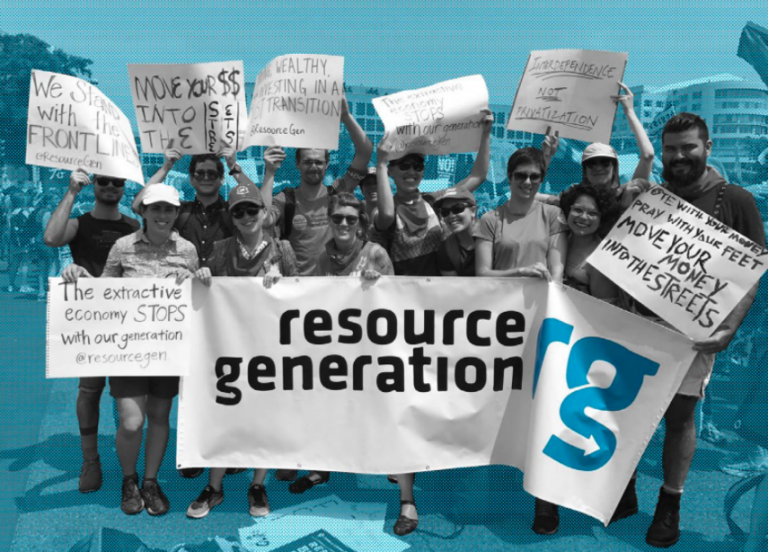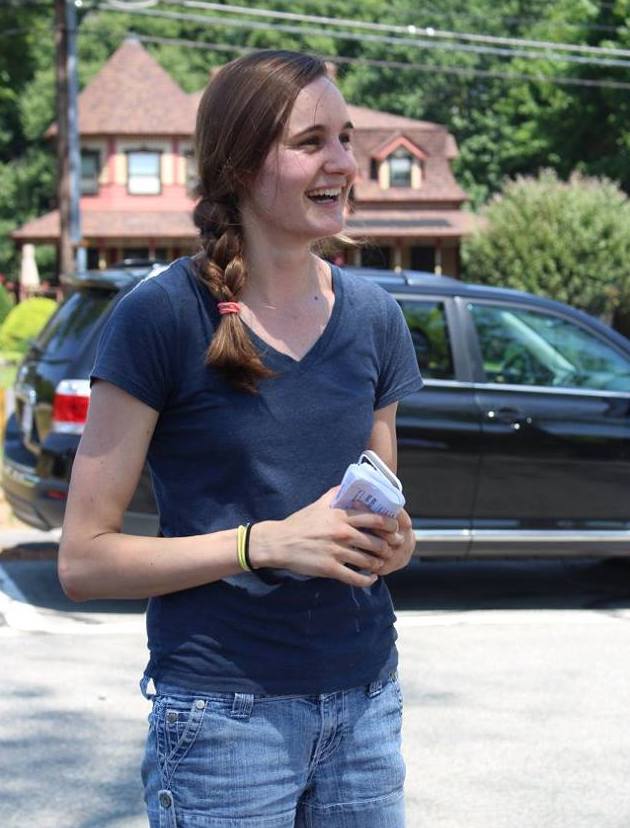A Few Minutes with Farhad

By Dev Aujla
A shuttle picked us up from the train in Chappaqua, NY. The driver was intent on getting us to the retreat center, racing through several small upper NY townships a tad too fast. It was the opening of the Creating Change Through Family Philanthropy Retreat run by Resource Generation, and to the driver it was obviously not to be missed. Along the empty tree-lined streets, we passed only one solitary figure trundling along the edge of the half-paved road. That brief glimpse was my introduction to Farhad. He is a musician, a road biker, a guy from Boston and someone that is transforming his foundation into an organization that not only funds good but invests in it.
Once he caught up, I got to chat with Farhad and have a candid conversation about what he does, how he does it and where he is going.
Dev: So tell me about the Chorus Foundation and what you are up to?
Farhad: The mission of the Chorus Foundation is to help consumers make the right choices to reduce their environmental footprint. We define consumers flexibly as anything from an individual, to a household, to a small business, all the way up to institutions and their procurement policies.
We tend to do project-specific grants. We do some grants that will help people’s operating costs, but usually it’s for a specific thing. And maybe that thing will happen over several years, and we’ll give each year a certain amount. But it’s all based on a specific project with a measurable outcome.
Dev: Tell me about your investments. How have they done?
Farhad: For MRI stuff [Mission Related Investing—read more here], I think we have about 30% of the endowment either invested in or set aside to be on-call for things that we would identify as MRI. Two investments make up that percentage of the endowment. Both of them actually have to do with energy efficiency and buildings. One of them was a PRI [Program-Related Investment] thing, a below-market deal that could have been a grant, but we decided to do it this way. It is trying to innovate the scaling up of an energy efficiency program for a whole city. The other deal is a top notch real estate fund that has a huge emphasis on energy efficiency. They don’t market themselves as green or anything, that’s just what they do as part of their financial bottom line, but they’re also very excited that what they’re doing is good for the planet.
Dev: So why is realigning your investments to be in line with your mission important for you?
Farhad: Part of the philosophy with Chorus is that we intend to spend everything down, and it’s going to sunset. But we’re obviously not going to do everything in one year. We’re going to give a certain amount, more than just what’s tax efficient. But since not all of it is being given, I’d really like to have the rest of the money still doing good work. We’re moving from doing negative screens to wanting to do positive screens, and then from there to investment opportunities. It’s like, let’s take our cash and put it in a bank that’s doing things in the community that we feel good about. We can certainly do some of the things that are no-brainers—moving the cash is the next objective that we have as an organization. But trying to find more MRI [Mission Related Investing] stuff—I think it’s a new field. So it’s not like there’s necessarily enough opportunities that we could put everything in.
Dev: How are your investments actually making a difference in the world?
Farhad: I think that what you can do as a flexible foundation—both with grants and investments—is that you’re essentially breaking new ground. You’re trying to do pilot programs. You’re doing things that are risky. I mean, we were talking about energy efficiency stuff, and people can’t figure out how to scale it up in the way that everyone wants to. So I think that one thing foundations can do is sort of philosophically similar to what venture capitalists can do: there’s something that you think can become a big thing, but it needs help at the beginning. Someone’s got to come in with the resources and give a push to create momentum. Once people figure out how to scale up energy efficiency, the rest of it—the job generation, the environmental issues—will all be moved forward, once we figure out how to get people to want to have this work done on their homes.
Dev: Are you able to find investments where you don’t have to sacrifice financial performance for social good?
Farhad: It’s difficult to say, the foundation being only three years old and having gone through a couple of years of economic collapse. A real estate fund emphasizing energy efficiency is not a super-revolutionary thing, but it’s still a more popular thing now. The newness combined with the economy makes it hard to judge how we might actually be doing. But to me, energy efficiency remains at its core a really good investment. Lending to people to do work [on their homes to make them more energy efficient]—you know they’re going to be able to pay those loans back because of all the utilities savings. So I think that we should be able to continue to find things like that, that will make sense as investments. There won’t be that much of a compromise, if at all.
Dev: So do you find there is more being talked about today in relation to MRI?
Farhad: Definitely. There’s more being talked about, and I see a lot more interest in it at conferences. I mean, if you look at Confluence Philanthropy, and Dana Lanza—I’ve seen her make presentations at a few different conferences, and it always seems like the interest level is high, and it gets higher and higher every time she does it. It’s really exciting to see from the side of the foundations; there’s more and more interest there.
Dev: How has Resource Generation helped you move your Mission Related Investments forward?
Farhad: One thing is that it’s gotten me to events where people like Dana are presenting. And it was funny, Dana and I were joking for a while, I’d see her a couple times of year. We would joke, she’d be like, “How’s it going with MRI stuff?” And when you see someone a few times a year, it’s like, okay, I’ve got to do this now. And so I invited her to come and talk to the Chorus Foundation board, along with David Wood from Initiative for Responsible Investment. Having RG make it a visible thing—it seems like a priority for them to have Dana always be here at these kinds of events, and thus it’s always on my mind.
Dev: So tell me where you’re going? What is the overall goal?
Farhad: If we can do 100% MRI, that would be awesome. It would be putting more of our resources towards our mission that I feel very passionate about. We have a board that’s very interested and supportive, and has a lot of investment expertise. Most boards meet with resistance. They’re like, “We want to do this, but we don’t want to call it that,” or, “We’re going to lose money,” or someone had a bad experience once and they never want to do it again. Whereas we are all like, “Yes, we want to do this.” We don’t know how quickly we can do something so ambitious, but we want to do all the things we can do this year, and start doing them right away. Like move the cash to a community bank, things that we can get done in the next couple of months easily. I would say that in 10 years we should be able to do 100%. Sometimes it feels bold saying it, but think of what you can do with 10 years. You can learn a lot. The whole environment of these investments will be changing; there will be more of those opportunities out there.
Dev: Have you found peers that have similar goals and that are moving towards MRI through Resource Generation?
Farhad: Definitely. I think that Jason Franklin [as a chair of the board’s Finance and Investment Committee at North Star Fund] and I both have 100% MRI as our goals. And so that was cool. I thought I’d say something, and it’d sound like a bold plan but Jason is saying it too, and that’s awesome. Hopefully there are more people in the group who will go for that, too. Even if it’s not 100%, every little change is a change for the better. To get excited by other people and get other people excited is important.


